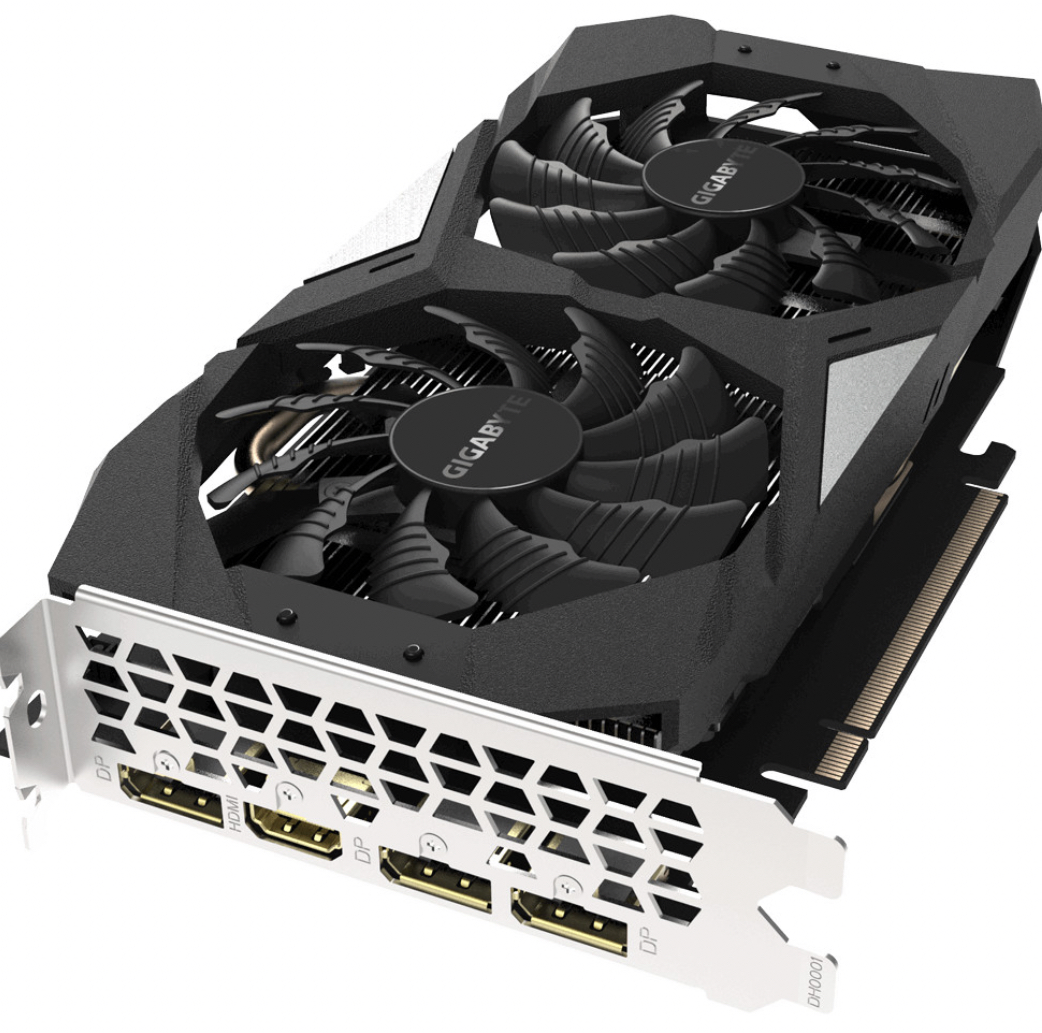For budget-conscious PC builders, a 16-series graphics card like the GeForce GTX 1660 Super offers a compelling option for decent gaming performance without breaking the bank. With its affordable price point, this graphics card provides great value for gamers seeking a balance between performance and cost-effectiveness.
The GeForce GTX 1660 Super is particularly well-suited for popular titles like Minecraft or Roblox, where it can deliver smooth frame rates and immersive experiences. Its capabilities extend beyond these games, making it a viable option for handling various other modern titles in respectable settings.
One crucial factor to consider when incorporating the GTX 1660 Super into a PC build is the power supply. While it is not as power-hungry as higher-end graphics cards, ensuring a stable power supply is still essential for optimal performance and system longevity. Builders should choose a power supply unit (PSU) that meets the card’s requirements, taking into account other components’ power needs to avoid any potential issues. Ultimately, the GeForce GTX 1660 Super serves as an affordable and reliable choice, making it an excellent addition to any budget-friendly gaming rig.
Power Consumption of GTX 1660 Super
The power consumption of the GTX 1660 Super is an important consideration for budget-conscious PC builders. During gaming sessions, the graphics card typically draws around 125 watts, which is relatively efficient and helps keep energy costs in check. However, users who engage in activities such as streaming or using dual-monitor setups may notice slight increases in power consumption due to additional processing demands.
It’s worth noting that the GTX 1660 Super has a maximum wattage of 125W, but in certain scenarios, it may experience short spikes of up to 135W. While these spikes are generally well within the card’s operational capabilities, it is still prudent to ensure that the chosen power supply unit (PSU) can handle such variations without causing instability or potential damage to the system.
For an optimal and stable experience, PC builders should select a PSU with sufficient wattage overhead to accommodate these occasional power spikes and provide headroom for other components in the system. This will ensure that the GTX 1660 Super performs at its best without any power-related bottlenecks, offering a smooth and enjoyable gaming experience for users without straining their budget.
Power Usage Per Hour
Understanding the power consumption of the GTX 1660 Super is essential for budget-conscious PC builders to assess its impact on electricity usage. During gaming sessions, the graphics card consumes approximately 125 watt-hours per hour (0.125 kWh/h). For the average gamer who plays around 8.5 hours per week, this translates to just over 1 kWh of weekly power consumption from the graphics card alone.
- However, it’s crucial to bear in mind that the total power requirement of a gaming PC goes beyond the graphics card. Other components, such as the CPU, RAM, storage drives, cooling system, and peripherals, also contribute to the overall power consumption of the system;
- While the GTX 1660 Super is relatively power-efficient, responsible PC builders should consider the cumulative power draw of all components when selecting an appropriate power supply unit (PSU). Opting for an energy-efficient PSU with enough wattage to accommodate the total power demands of the system will help minimize electricity costs and promote sustainable usage.
By making informed choices and considering power consumption in the PC build process, budget-conscious gamers can strike a balance between performance and energy efficiency, ensuring an enjoyable gaming experience without breaking the bank.
Selecting the Right Power Supply
When selecting a power supply unit (PSU) for a PC build featuring the GTX 1660 Super, a recommended minimum wattage of 450 watts or higher is advised. This calculation takes into account the power consumption of the graphics card, as well as other components like the CPU, motherboard, RAM, storage drives, and peripherals.
To calculate the total component power draw, it’s essential to refer to the specifications of each component and add up their wattage requirements. Once the total power draw is determined, it is prudent to add a 20% buffer to accommodate any potential power spikes or fluctuations during intensive tasks or system operation. This buffer provides stability and ensures that the PSU can handle sudden increases in power demand without risking any instability or damage to the components.
A larger PSU, such as a 500W or 550W unit, can offer some advantages, particularly if the user plans to upgrade their system in the future with more power-hungry components. However, for mid-spec PCs on a tight budget, a 450W PSU will typically suffice and provide a cost-effective and reliable power solution for the GTX 1660 Super-based build.
The Optimal Power Supply
When considering a power supply unit (PSU) for a GTX 1660 Super-based system, a 450-watt PSU strikes a good balance between performance and cost-effectiveness.
- It provides sufficient power to support the graphics card’s needs, along with other components, without being overkill for a mid-range setup;
- One reputable option is ASUS’s 80+ Bronze gaming power supply. While it may not be fully modular, meaning some cables are fixed, it still offers a reliable and efficient power delivery system;
- The 80+ Bronze certification indicates a high level of energy efficiency, helping to reduce electricity costs and heat output;
- ASUS, a well-known and respected brand in the PC hardware industry, provides added assurance of quality and durability. Additionally, the PSU comes with a generous 6-year warranty, demonstrating ASUS’s confidence in its product’s longevity and performance.
For budget-conscious PC builders seeking a reliable and cost-effective power supply solution for their GTX 1660 Super build, ASUS’s 80+ Bronze gaming power supply presents a compelling choice, ensuring smooth and stable operation for years to come.
GTX 1660 Super Power Cable Requirement
Indeed, simplicity is a key aspect when it comes to powering a GTX 1660 Super graphics card.
- One of the advantages of this graphics card is that it requires a single 8-pin power connector for its power supply, making the cable setup straightforward and hassle-free;
- Modern power supply units often come equipped with 6+2 pin connectors, also known as 8-pin PCIe connectors. This versatile design allows the connector to function as both a 6-pin and 8-pin connector, providing compatibility with a wide range of graphics cards, including the GTX 1660 Super;
- The 6+2 pin connector fits seamlessly into the GTX 1660 Super’s power input, ensuring a secure and reliable connection;
- This simplicity and standardized connector design make it easy for PC builders to set up their systems without worrying about complex cable configurations or the need for multiple power connectors.
With a single 8-pin connector, powering the GTX 1660 Super becomes a simple and user-friendly process, allowing gamers to focus on their favorite games rather than dealing with technicalities during the build process.
Conclusion
In conclusion, the GeForce GTX 1660 Super stands as an attractive option for budget-oriented PC builds, providing commendable gaming performance without straining the wallet. Understanding the power supply requirements is crucial to ensure optimal performance and avoid potential issues. With its power draw and wattage spikes considered, a 450-watt or higher PSU is recommended for this graphics card. Although investing in a slightly larger power supply may offer benefits for future upgrades, a 450-watt unit strikes an excellent balance between affordability and capability.
When selecting a power supply, the ASUS 80+ Bronze gaming PSU emerges as a reliable budget option, equipped with a 6-year warranty for peace of mind. Furthermore, connecting the GTX 1660 Super is a breeze with a single 8-pin power cable, making the setup process straightforward.
By making informed decisions on the power supply and other components, PC builders can confidently assemble a system capable of handling the latest games and providing an enjoyable gaming experience without breaking the bank. The GTX 1660 Super proves that it’s possible to achieve impressive results on a budget, making it an attractive choice for those seeking a cost-effective gaming solution.








